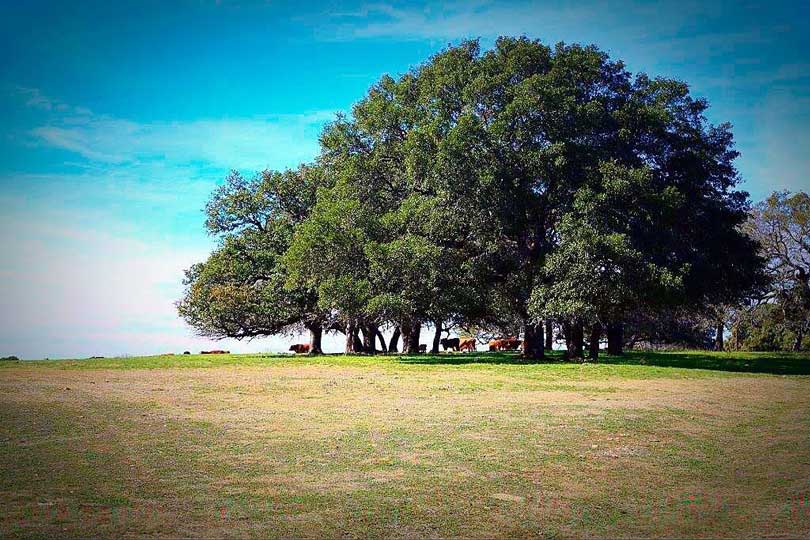By Haley Herzog
TFB Communications Intern
With hot temperatures comes the potential for heat stress in cattle.
As temperatures in Texas continue to reach record highs, Dr. Ron Gill explains the importance of recognizing heat stress.
“The main thing is just try to get everything done as early in the day as you can, so you don’t elicit the heat stress response in these cattle,” Gill, professor and Extension Livestock Specialist, said. “That’s probably going to be the biggest, most critical thing if you have to work them—still make sure they have access to water.”
Being aware and proactive is most important, Gill said, as well as being able to recognize the symptoms of heat stress.
According to Gill, symptoms of heat stress in beef cattle include open mouth breathing, salivation from the mouth, heaving of the stomach and panting.
“Once they get to the point they have to open mouth breathe, they’re certainly in heat stress and need to get to shade and get to water if at all possible,” Gill said in an interview with the Texas Farm Bureau Radio Network.
The effects of heat stress can lead to many harmful damages and impacts on beef cattle.
“Anytime you stress one physiological, it’ll alter their immune system function and everything else, because it just goes to competing for energy in the body. It just creates a very stressful environment in the body, and I think that’s why they basically just shut down if they can’t dissipate enough heat,” Gill said.
When beef cattle aren’t able to dissipate their heat, it can cause internal and external issues for the animal, and sometimes those can result in loss of life.
“If they can’t dissipate enough heat, it overwhelms the whole system and they will die,” Gill said. “Other issues would be early embryonic death. Two or three months bred, it won’t be an issue. But if they’re in the middle of breeding season, there can be some embryonic death loss or early fetal reabsorption perhaps.”
Certain beef cattle characteristics, such as weight and color, can also lead to quicker, more extreme heat stress.
“The heavier and fatter an animal is the more heat they tend to generate,” Gill said. “All cattle can get hot. I think that’s why in the southern states we don’t see a lot of black hided cattle unless they have Brahman influence in them. Those cattle can dissipate heat quicker than Angus or other Bos Taurus cattle do.”
Being able to identify when your livestock are at risk of heat stress and knowing the signs are important, but developing plans for when livestock undergo heat stress is also essential.
A livestock owner, according to Gill, can take the following steps to prevent or alleviate heat stress while working cattle:
- Work cattle early in the day between 8 to 10:30 a.m. or later in the day when temperatures are at their cooler points
- Always make sure a water source is available nearby to keep animals hydrated and cool
- Allow working operations and areas to be underneath or near shaded areas
- Never work cattle in the heat of day when temperatures are at their extreme
- Watch for heat stress symptoms. If cattle are experiencing heat stress, turn them back out into a pen or pasture rather than continuing to work them.
“Just make sure that you do whatever is in the best interest of the animal,” Gill said. “A lot of the times with our schedule and such we may try to do something when it’s convenient for us and not necessarily for the cattle.”
The Texas heat is unavoidable. There’s no hiding from it, or running from it. As the hot, humid conditions persist, Gill stresses to be more diligent in checking cattle throughout the day and ensure they have access to shade and water.

